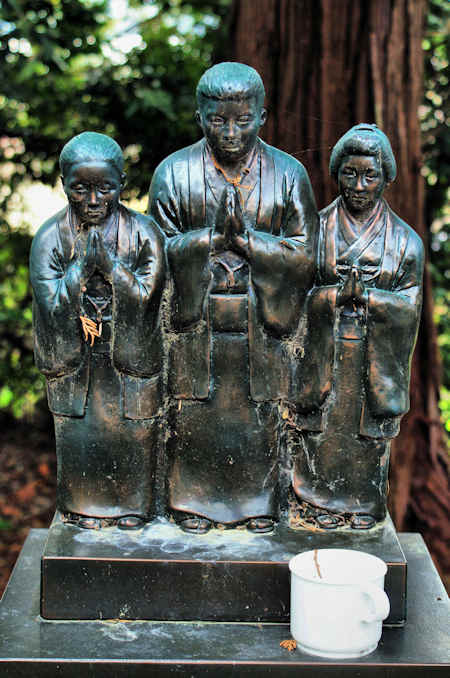Totakesan Saiko Temple, number 73 on the Shingon Kyushu Pilgrimage, is located in the high country north of Sasebo, Nagasaki, not far from the border with Arita in Saga.
The long, straight approach is lined with lanterns, and many of the statues that comprise a miniature 88 temple Shikoku Pilgrimage. The latter part of the approach has a trellis supporting wisteria.
There was a pond with a small shrine, probably a Benzaiten or a Suijin. Like much of the temple grounds, it seemed overgrown and unkempt, although I believe that since I visited a young priest has taken over the temple and has done a lot of renovation work.
A pair of stone Nio guard the main entrance gate.
The temple was founded in 1687 and was supported by the successive lords of the Hirado Domain.
It is said that at a nearby sacred rock and spring a priest had a vision of Kokuzo Bodhisattva, and so a statue of Kokuzo from a temple said to be founded by Gyoki across the mountains in Takeo, was transferred here and became the honzon.
The temple is also number 28 on the Kyushu Kannon Pilgrimage and number 17 on the Kyushu Jizo Pilgrimage.
A branch of Suitengu Shrine is within the temple grounds.
The grounds of the temple include some noteworthy trees that attract visitors. Most notable is a huge Omurazakura which is a cutting from the original Omurazakura lanted at the founding of the temple.
There is also a big Weeping Cherry and a Gyoiko Cherry with unusually coloured blooms, and something called a Turmeric Cherry.
,
There are also plenty of rhododendrons, and the aforementioned Wisteria.
Since the new priest took over in 2017 I believe the gardens have also been looked after much better than when I visited.

































































